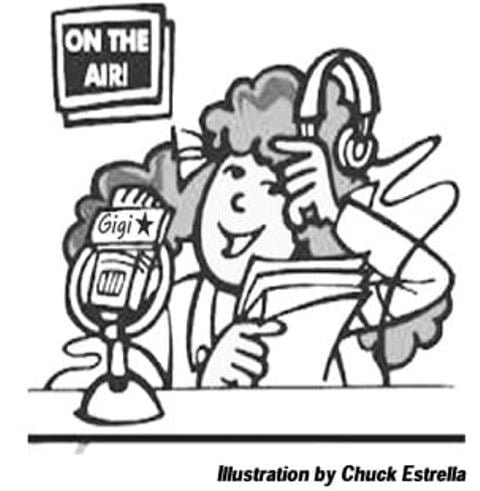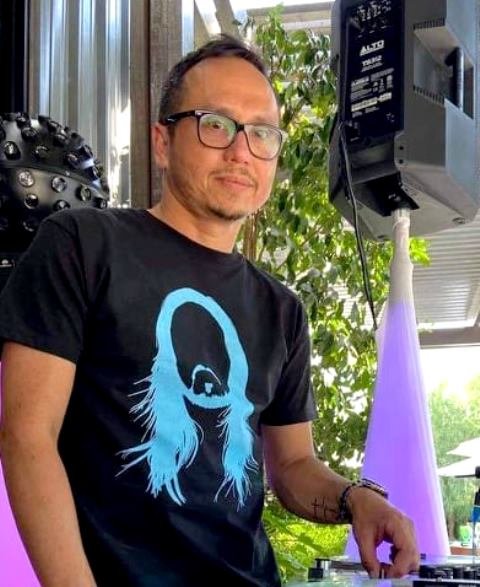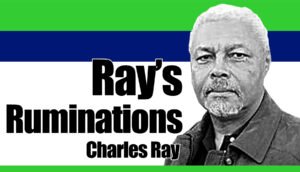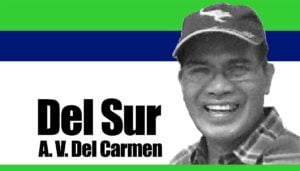
If today you refer to yourself as a baby boomer that means only two of many things: 1) that you are a card toting citizen with 20 percent discount everywhere, and 2) your favorite singer/s would be, depending on your mood, Frank Sinatra or the Beatles.
It also means that you are among the many blessed people who have lived through the most wonderful years (1955-1975) in Philippine entertainment when radio was king and a Sony Elitone transistor radio was almost like a national treasure.

Those were the golden years when people would congregate in groups to listen to the 6 o’clock daily news delivered with gutsy fervor by someone like Eddie La Gonzales or Rene Tan. And they stayed glued as their favorite drama played as enacted by popular radio talents, who were almost like superstars in their own strata. This was a time when radio announcers (as they were called then) would be given homage as local celebrities and enjoyed the adoration of fans.
In celebration of World Radio Day, I thought I would bring you tidbits of interest regarding some of your favorite radio personalities who, up to now, are still very active even in their retirement.
Eddie de la Fuente grew up in a hacienda where his father was the administrator. He said he attended school whenever he could manage to come up with jeepney fare, otherwise he would be absent from class. So when a call for audition as a radio talent was made by DYXL in June 1960 under Ramy Besana, he took the challenge. “I could barely stand up, the script kept falling down and my voice started as a squeak.” he said.
But he made it. From among 100 kids who auditioned, along with Jane Mendoza Ybarzabal and Evangeline Bonghanoy Labalan, Eddie ended up with the role. Later on, Eddie would find work at other stations like DYEZ, DYAQ and DYRH specializing in drama production, and finally with DYHB where he retired in 2003. He said being in radio did not pay much but he had fun and was able to send his kids to school through his other “sidelines” – referring to writing soap operas and hosting events.
Soap operas during that time were an important staple in radio broadcasting. They took over prime time when more people were projected to be listening. Because listeners depended on their own imagination to picture the stories unfolding before them, talents were expected to take on a variety of voices depending on their roles, and the production staff had to reinvent sounds, for example, using coconut shells to depict horses galloping, for example.

Jom Arceo (radio name: Jack Flash) started as a graveyard shift DJ at MGK103. When a colleague frankly critiqued his voice as unsuitable for radio, he was “hurt, big time”, he recalled. That egged him on to not only improve the quality of his voice but he went on to become a voiceover talent for commercials, did cameo roles on local TV, and was a one-time reporter for ANC. He became the production chief of XL’s FM station and was the station manager of 95.5 Star FM until he left for the States in 2003. As for his detractor, nothing has been heard of him since.
Quoting Francis Yulo, “I have wonderful memories at MGK 103. All the FM DJs were so good and fluent in English that we even had American fans like Anton, Skip and JJ Kennedy, to name a few. We had the grandest of times! And to top it all, we even got paid doing it.”
For Serafin Plotria (radio name: Jopy San Juan), his early experience on radio was unnaturally scary.
Jopy did the early morning show (4 to 6 a.m.,) at Yes FM 105.5 back in 2001. Their studio was located on the third floor of a building where they were the only occupants. One morning, while he was in the comfort room after his show, he distinctly heard the playful voice of an infant calling “Papa! Papa!” right outside the door. Not giving it much thought, he hurriedly opened the door – only to find nobody there. He was later told that there used to be a neighboring building which housed a popular brothel back in the 90s. On exactly the same level as their studio was, were the girls’ quarters where they said a lot of abortions took place. Now that’s a surreal experience.
My big sister (radio name: Dodo Paculan) sort of segued from being a mainstay singer for a teen-themed live program at DYRL to taking duties as a part-time announcer (because she was too young at 14). The show, Campus Jamboree, had its own following among teenagers from public and private schools all over Bacolod.
She affectionately remembers Bert Adorna, Chita Amamag, Paul Miases, Lito Paduano, Alan Guanzon, Freddie Ellenberger, Primo Tayapad and Alan Ybarzabal as part of that singing group. She also recalled that one time while assigned to play the commercials during breaks from a singing contest which was being broadcast from a remote location, Tio Celso Tan kept saying, “Now back to our studio for a commercial break. Studio, studio, come in!”
There was nothing but dead air. It turned out that she had fallen asleep while waiting for her cues!
For almost all announcers, being in radio is more of a passionate calling rather than grueling work. You get to meet people from all walks of life who make you feel important (just like a movie personality), share your love of music, and as a fun bonus, be showered with all kinds of gifts.
I was witness to this cult-like adoration during my big sister’s stint at DYRL and especially when she moved to DYWX. Groups of teenage girls and boys would flock outside of the station so they could meet and talk to her – with some bringing food while there were others who would bring stacks of LPs for her to use in her programs. It was always a joyful and happy crowd.
She also had fans in the Nanays who would send her homemade delicacies and would invite her to their parties. Even during her 2-year stint at a KBS AM station in Baguio, her fans were forgiving of the fact that she could not speak Ilocano, but embraced her mixed broken Tagalog and English shows anyway. The foodies and other gifts still came, and with the impressionable teeners.
Believe me, there is no turning back once you’re into radio. You will find the wanting, the desire and the joy of communing with your invisible audience so deeply rooted in your blood that like a song, it keeps on coming back. However, as I have repeated often enough, a three hour boardwork is not enough to put food on the table so an announcer (or a DJ, if you prefer) has to hustle to make more money. But with all the glamour that goes with it, you wouldn’t want to miss a show.
It has always remained a mystery to listeners, but with just a voice and a song, they suddenly find in you a best friend, a confidante – someone they can look forward to every time a program begins. So, when I start playing Jose Mari Chan’s Love at 30,000 Feet (The Golden Eye, iFM, 6 to 9 a.m. Sunday edition), it makes me happy that somehow in my little way, I know that in the next three hours I will be making a lot of people shriek with delight when I mention their names and play their favorite songs on air.
Devoted listeners like Nena Hernandez, Maria Aida Ricafort Bilbao and Ramona Panes Cowle (who now resides in Australia), all agree that radio music was what made their growing-up years exciting and full of drama.
They were the paparazzi of yore, hounding radio stations just to see their favorite radio announcers like Naning Obregon (DYRI), Alex Abaygar and Virgie Villamor (ABS-CBN), Johnny Bire, Daisy Sabordo, Annie del Castillo, Bernie Medina and Joe Rosado (DYRL), Fatima Tan and Gelzar Gomilla and my favorite DJ Henry Villalva (DYWX/MGK 103), Roque Galvan and Jason Sy (DYAF), and Ben Maguad (DYHB). They would also join quiz shows which gave away 45 rpm records as prizes.
They were true fans, wanting to meet and hear their favorite radio announcers in person, some of whom ended up as their longtime friends.
Of course, there were other remarkable radio personalities during that time. The newscasters were well respected voices and opinion makers, likeCelso Tan, who sadly was fatally shot because of his investigative reporting, would always be part of the radio scene.
I wish I had time to interview more super radio luminaries because for sure, their stories and experiences in radio would surely have been amusing, colorful, and interesting.
On a positive note, it is good that radio has managed to keep pace with the digital revolution – where we not only have short wave (transmission charges remain expensive) but free live streaming too so that space and distance no longer matter and we are heard in all the nooks and crannies of the world.
At least for now, radio’s still here to stay. – NWI




